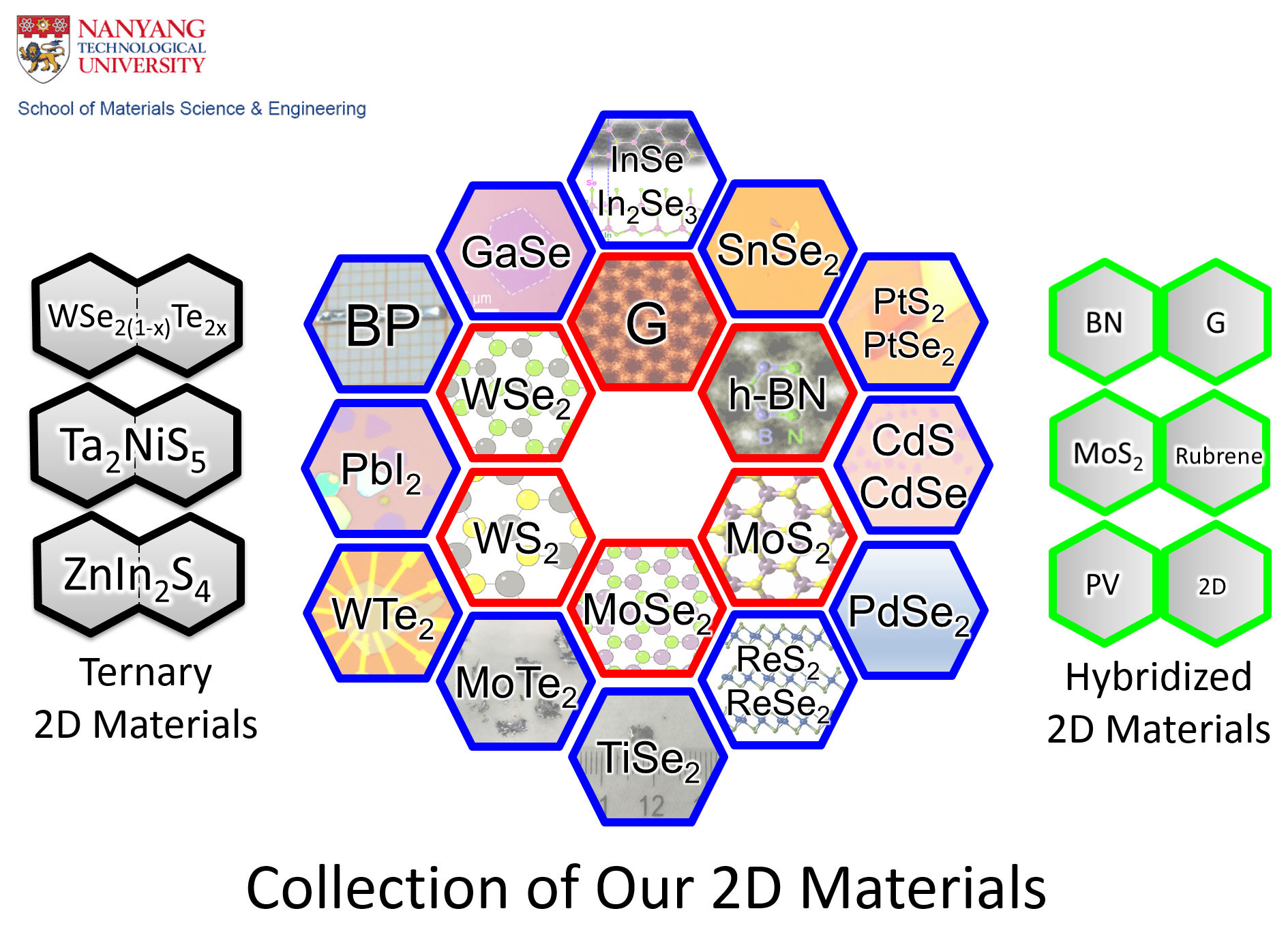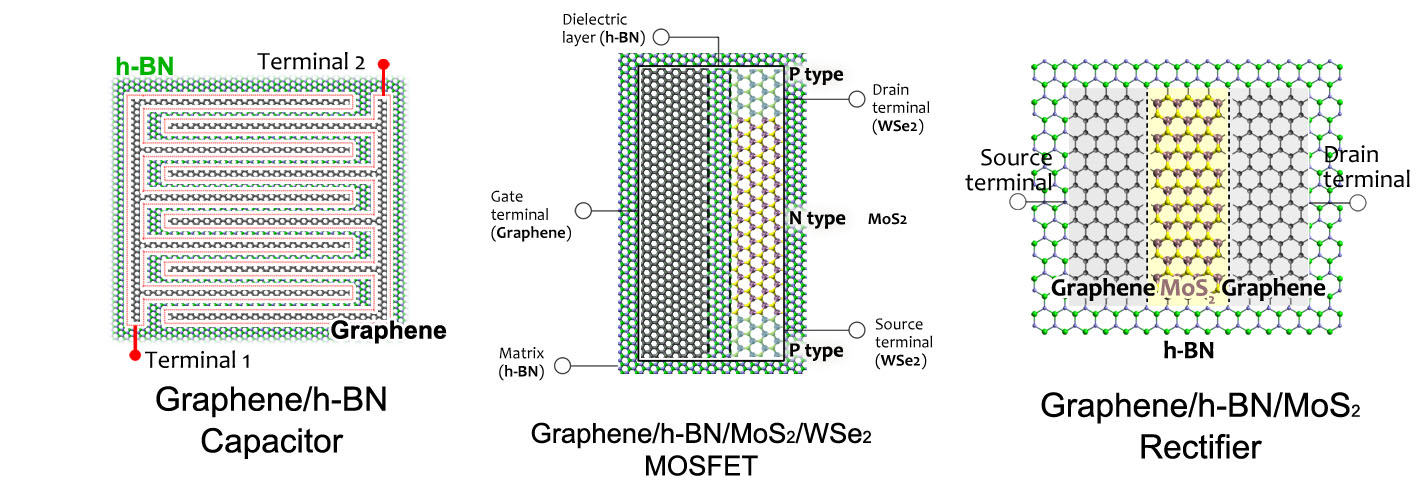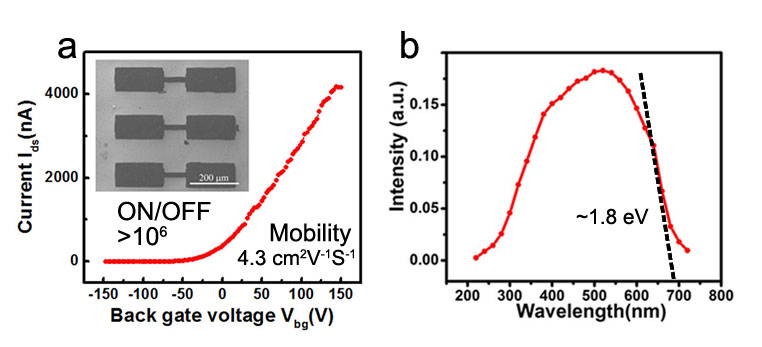Our group will focus on the following topics:
- Synthesis
- We have demonstrated the synthesis of high-quality and large-size novel 2D monolayers, especially, a full spectrum of transition metal dichalcogenides (TMDs), the biggest family ever known in 2D materials. I have also realized a large variety of 2D Van de Waals solids, which allows us to build news material in the way of Lego game. Recently, we have realized superconductivity (MoTe2, NbSe2), charge-density-wave (TaS2) and linear dichroism (ReS2) in 2D materials, and identified a few Wyle semi-metals (MoxW1-xTe2, TaIrTe4) as well.
- 1) Graphene
- 2) Nitride: hexagonal boron nitride (h-BN)
- 3) Sulfides: Molybdenum disulfide (MoS2), Tungsten disulfide (WS2), Platinum disulfide (PtS2), Cadmium sulfide (CdS), Rhenium disulfide (ReS2), Titanium disulfide (TiS2) etc.
- 4) Selenides: Molybdenum diselenide (MoSe2), Tungsten diselenide (WSe2), Tin diselenide (SnSe2), Platinum diselenide (PtSe2), Cadmium selenide (CdSe), Palladium diselenide (PdSe2), Rhenium diselenide (ReSe2), Titanium diselenide (TiSe2), Indium Selenide (InxSey)
- 5) Tellurides: Molybdenum ditelluride (MoTe2), Tungsten ditelluride (WTe2)
- 6) Iodide: Lead iodide (PbI2)
- 7) 2D alloy: h-BNC, doped TMDs (Se doped MoS2, Mo doped WTe2, etc.), Ta2NiS5, ZnIn2S4, etc.
- 8) Heterostructured 2D materials: BN/Graphene, TMDs (MoS2/WS2, MoSe2/WSe2, etc.), 2D/organic (Rubrene, Perovskite, etc.)

- Engineering
- Engineering, characterizations and performance of carbon, h-BN based nano-architectures: 0D (graphene quantum dots, GQDs), 1D (graphene and h-BN nanoribbons and multi-component heterogeneous nanoscale), 2D (h-BN/Graphene stacks, carbon-doped h-BN (h-BCN) and 3D (nano-porous-templated graphene and h-BN structures and graphene/BN-CNT) structures.

- Applications
- 1) High-performance electronic devices: Superconductor and phase transition devices; Field-effect transistor (FETs); PN junctions; Ultra-low-power consumption electronic devices; Spin/valley related electronics; Anisotropic electronics (graphene/h-BN, ReS2), programmable p-n junctions etc.

- 2) Optoelectronic devices: High efficient lighting devices; Infrared sensors; Polarization detectors; etc.
- 3) Electrocatalyst and sustainable energy
- 4) Machine learning guided synthesis and characterization of materials